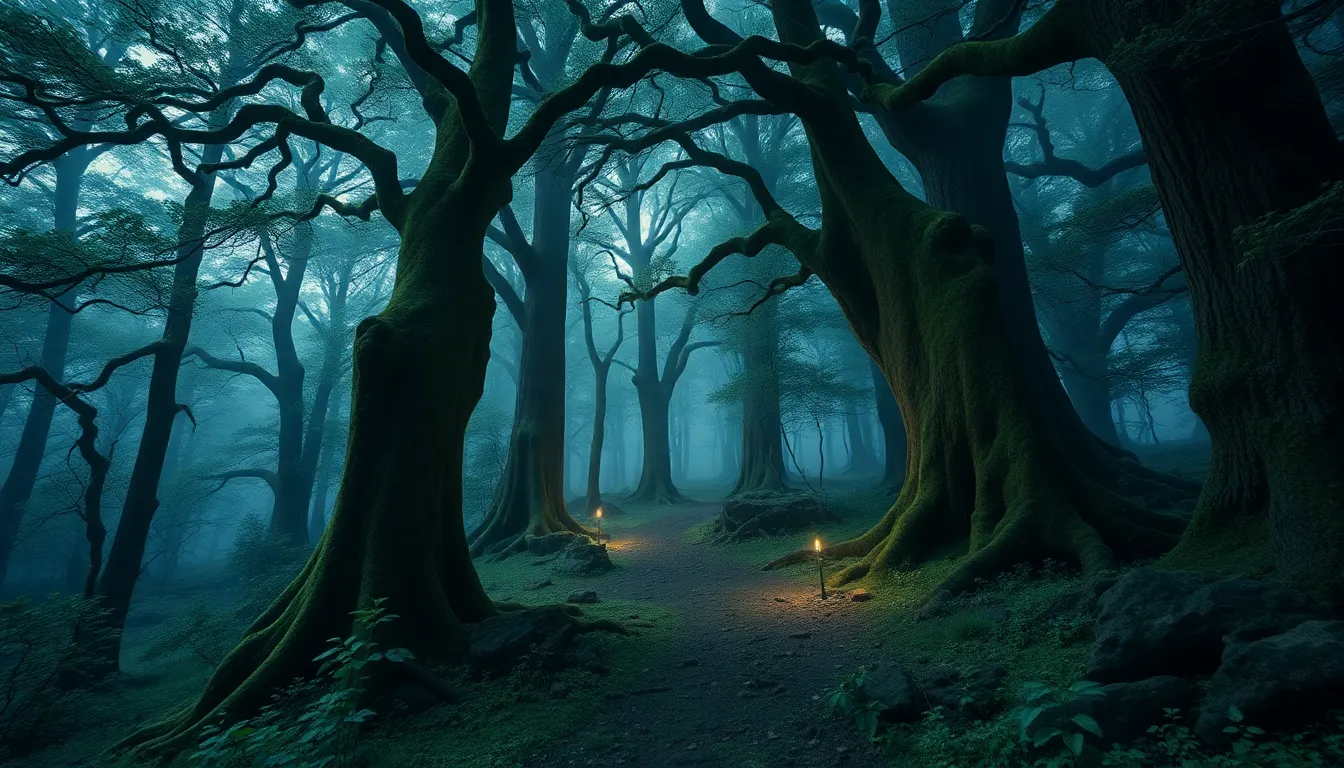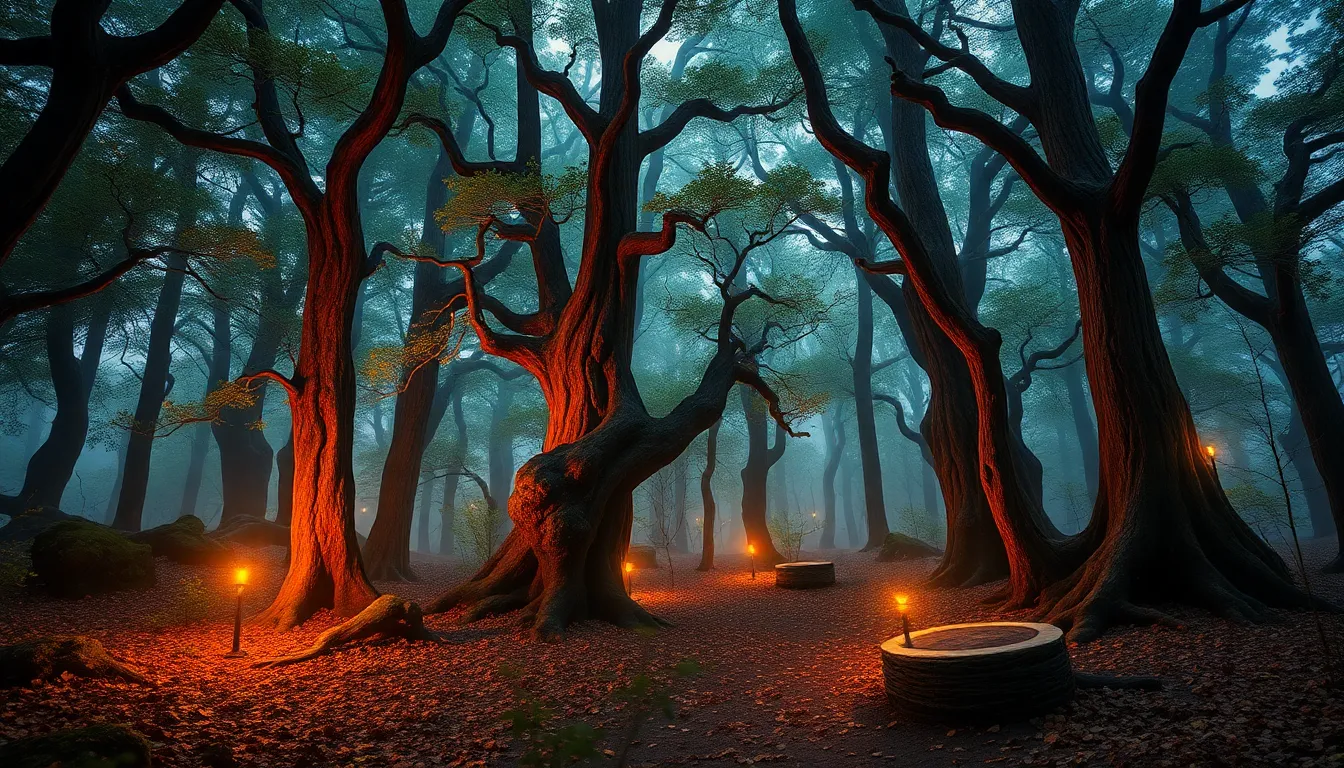The Enchanted Forest: A Journey of Myth and Magic
I. Introduction to the Enchanted Forest
Enchanted forests have long captivated the human imagination, serving as portals to realms of myth and magic. These mystical woodlands often symbolize a place where the ordinary blends with the extraordinary, a setting where stories of adventure, transformation, and the supernatural unfold. In folklore, enchanted forests are places of refuge and peril, filled with creatures both wondrous and fearsome.
This article will explore the historical roots, symbolism, magical inhabitants, and cultural representations of enchanted forests. We will delve into their significance in mythology, literature, and the psychological impact they have on us, as well as the importance of conserving these magical ecosystems for future generations.
II. Historical Roots of Enchanted Forests
A. Ancient myths and legends surrounding forests
From ancient times, forests have been a source of inspiration and intrigue. Many cultures have woven tales of gods, spirits, and mythical beings that inhabit these wild spaces. The dense trees and shadows create an atmosphere ripe for storytelling, where heroes embark on quests, and the unknown lies just beyond the next bend in the path.
B. Cultural variations: Enchanted forests in different traditions
- Celtic Tradition: In Celtic mythology, forests are often places of magic and transformation, inhabited by fairies and otherworldly beings.
- Norse Mythology: The Norse viewed forests as sacred spaces, with Yggdrasil, the World Tree, symbolizing the interconnectedness of all life.
- Asian Folklore: Many Asian cultures regard forests as sacred, with spirits that protect nature and guide humans.
III. Symbolism of the Forest in Mythology
A. The forest as a place of transformation and self-discovery
Enchanted forests often symbolize a journey into the unknown, where characters face trials that lead to personal growth. This theme is prevalent in many mythologies, where venturing into the forest signifies a departure from the familiar and an embrace of transformation.
B. Archetypes and motifs associated with enchanted forests
The hero’s journey is a common motif, where the forest serves as a backdrop for challenges and revelations. Key archetypes include:
- The Hero: Embarks on a quest, often facing fears and adversities.
- The Wise Old Man/Woman: Provides guidance and wisdom to the hero.
- The Trickster: Challenges the hero, often leading to self-discovery.
IV. Magical Creatures and Beings
A. Fairies, elves, and other mystical inhabitants
Enchanted forests are often home to a variety of magical creatures. Fairies and elves, with their ethereal beauty and mischievous nature, are perhaps the most well-known inhabitants. These beings are often depicted as protectors of the forest, embodying its magic and mystery.
B. The role of animals and nature spirits in forest mythology
Animals also play a significant role in the mythology of enchanted forests. They are seen as messengers between the human world and the spirit realm, often guiding or hindering the hero’s journey. Nature spirits, such as dryads and naiads, embody the essence of the forest, representing its vitality and connection to the earth.
V. Famous Enchanted Forests Around the World
A. The Black Forest, Germany: Tales of the Brothers Grimm
The Black Forest is steeped in folklore, with tales of witches, goblins, and enchanted creatures. The Brothers Grimm drew inspiration from this mystical locale, weaving stories that reflect the forest’s dark beauty and enchanting allure.
B. Aokigahara, Japan: The Forest of Spirits
Aokigahara, located at the base of Mount Fuji, is known as the “Sea of Trees.” This forest is rich in cultural significance, often associated with supernatural occurrences and spirits. It has become a place of contemplation, attracting those seeking solace as well as those drawn to its mysterious reputation.
C. The Forest of Arden, England: Nature and romance in Shakespeare
The Forest of Arden, featured in Shakespeare’s “As You Like It,” epitomizes the romantic ideal of the enchanted forest. It serves as a backdrop for love, transformation, and the exploration of identity, highlighting the forest’s role as a sanctuary for personal discovery and connection.
VI. The Enchanted Forest in Literature and Film
A. Classic fairy tales and their modern adaptations
Enchanted forests frequently appear in classic fairy tales, serving as settings for adventures that challenge protagonists. Stories like “Hansel and Gretel” and “Little Red Riding Hood” illustrate the forest as a place of danger and wonder, a theme that continues to resonate in modern adaptations.
B. Analysis of notable works
Notable works such as “The Chronicles of Narnia” and “The Lord of the Rings” showcase enchanted forests as vital elements of their narratives. These stories emphasize themes of courage, friendship, and the battle between good and evil, with forests often representing the threshold between different worlds.
VII. The Psychological Impact of Enchanted Forests
A. The forest as a metaphor for the subconscious mind
The forest often serves as a powerful metaphor for the subconscious, representing the hidden depths of the human psyche. It embodies our fears, desires, and the unknown aspects of ourselves that we must confront.
B. Exploration of fear, wonder, and the unknown in enchanted woods
Enchanted forests evoke a complex interplay of emotions: fear of the unknown, wonder at nature’s beauty, and the thrill of adventure. This duality creates a rich psychological landscape that invites exploration and introspection.
VIII. Conservation and Protection of Real Enchanted Forests
A. The importance of preserving biodiversity and natural habitats
Real enchanted forests are vital for maintaining biodiversity and ecological balance. These ecosystems provide habitat for countless species and play a crucial role in combating climate change.
B. Community efforts and initiatives to protect magical ecosystems
Many communities are actively engaged in efforts to protect and preserve enchanted forests. Initiatives often include:
- Reforestation projects to restore damaged habitats.
- Educational programs to raise awareness about the importance of forest conservation.
- Community-led conservation efforts to protect local ecosystems.
IX. Creating Your Own Enchanted Forest Experience
A. Tips for exploring real-life enchanted forests
To create your own enchanted forest experience, consider the following tips:
- Visit during different seasons to see how the forest transforms.
- Take a guided tour to learn about local flora and fauna.
- Engage in mindful walking to connect with the sounds and sights around you.
B. Activities and mindfulness practices to connect with nature
Engaging in activities like journaling, sketching, or meditating can deepen your connection to the enchanted forest. Consider:
- Creating a nature journal to document your experiences.
- Practicing mindfulness exercises to immerse yourself in the forest’s beauty.
- Participating in local conservation efforts to give back to the forest.
X. Conclusion: The Lasting Legacy of the Enchanted Forest
A. Reflection on the enduring appeal of enchanted forests in modern culture
Enchanted forests continue to hold a special place in


